Max Bannach
Asteroid Mining: ACT&Friends' Results for the GTOC 12 Problem
Oct 28, 2024Abstract:In 2023, the 12th edition of Global Trajectory Competition was organised around the problem referred to as "Sustainable Asteroid Mining". This paper reports the developments that led to the solution proposed by ESA's Advanced Concepts Team. Beyond the fact that the proposed approach failed to rank higher than fourth in the final competition leader-board, several innovative fundamental methodologies were developed which have a broader application. In particular, new methods based on machine learning as well as on manipulating the fundamental laws of astrodynamics were developed and able to fill with remarkable accuracy the gap between full low-thrust trajectories and their representation as impulsive Lambert transfers. A novel technique was devised to formulate the challenge of optimal subset selection from a repository of pre-existing optimal mining trajectories as an integer linear programming problem. Finally, the fundamental problem of searching for single optimal mining trajectories (mining and collecting all resources), albeit ignoring the possibility of having intra-ship collaboration and thus sub-optimal in the case of the GTOC12 problem, was efficiently solved by means of a novel search based on a look-ahead score and thus making sure to select asteroids that had chances to be re-visited later on.
Efficient Enumeration of Markov Equivalent DAGs
Jan 28, 2023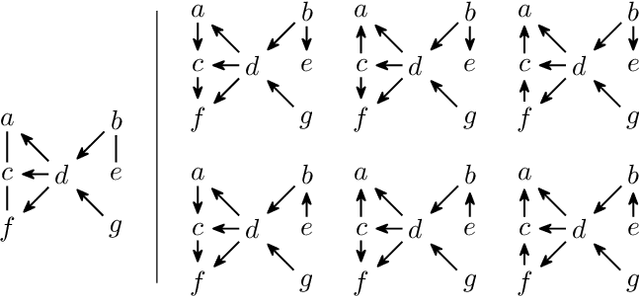
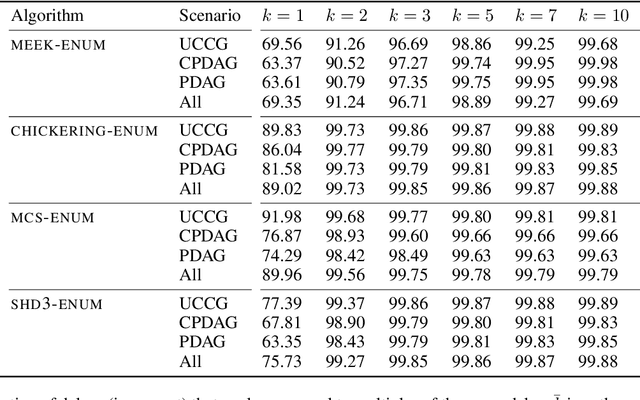
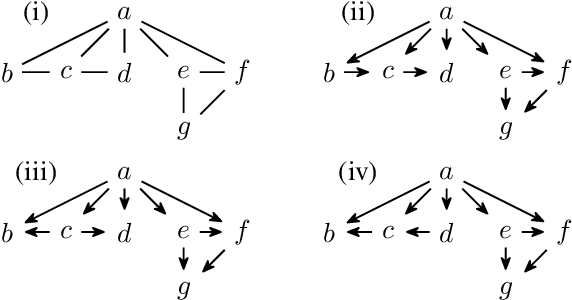

Abstract:Enumerating the directed acyclic graphs (DAGs) of a Markov equivalence class (MEC) is an important primitive in causal analysis. The central resource from the perspective of computational complexity is the delay, that is, the time an algorithm that lists all members of the class requires between two consecutive outputs. Commonly used algorithms for this task utilize the rules proposed by Meek (1995) or the transformational characterization by Chickering (1995), both resulting in superlinear delay. In this paper, we present the first linear-time delay algorithm. On the theoretical side, we show that our algorithm can be generalized to enumerate DAGs represented by models that incorporate background knowledge, such as MPDAGs; on the practical side, we provide an efficient implementation and evaluate it in a series of experiments. Complementary to the linear-time delay algorithm, we also provide intriguing insights into Markov equivalence itself: All members of an MEC can be enumerated such that two successive DAGs have structural Hamming distance at most three.
Polynomial-Time Algorithms for Counting and Sampling Markov Equivalent DAGs with Applications
May 11, 2022
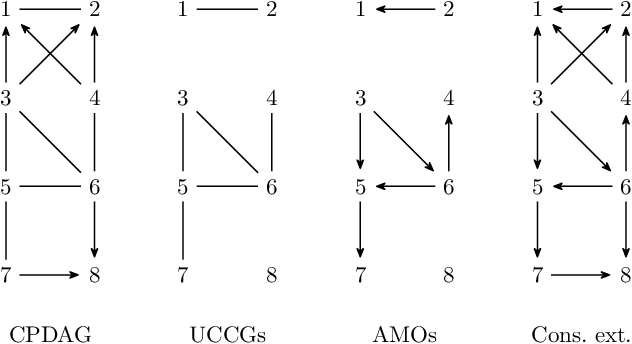

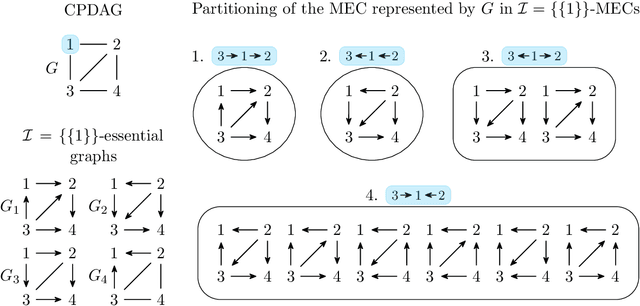
Abstract:Counting and sampling directed acyclic graphs from a Markov equivalence class are fundamental tasks in graphical causal analysis. In this paper we show that these tasks can be performed in polynomial time, solving a long-standing open problem in this area. Our algorithms are effective and easily implementable. As we show in experiments, these breakthroughs make thought-to-be-infeasible strategies in active learning of causal structures and causal effect identification with regard to a Markov equivalence class practically applicable.
Polynomial-Time Algorithms for Counting and Sampling Markov Equivalent DAGs
Dec 17, 2020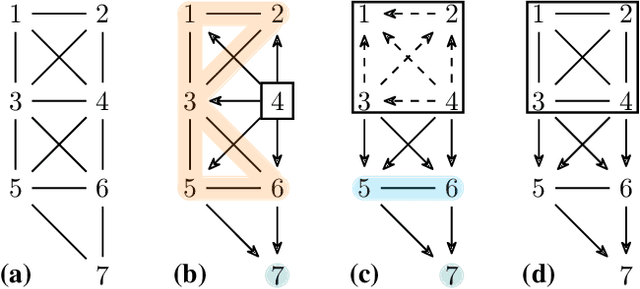
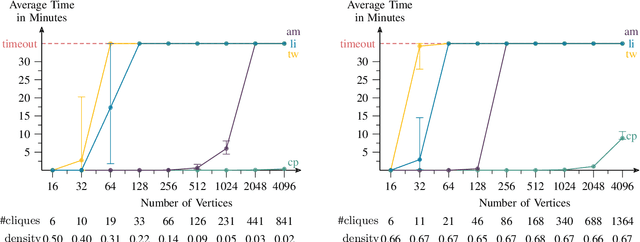
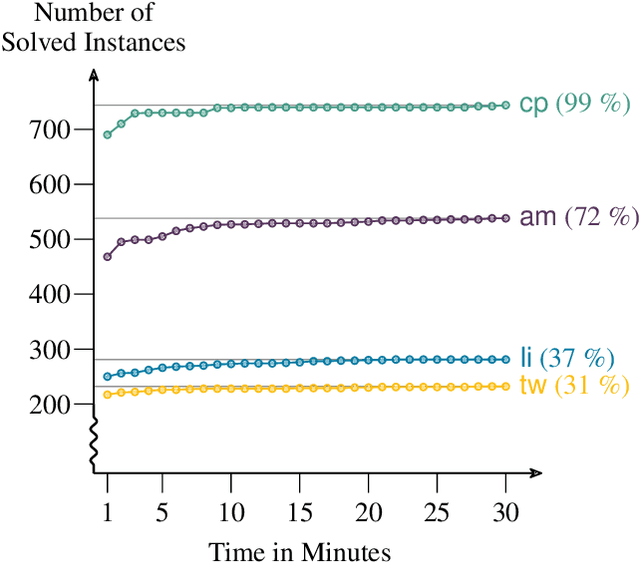
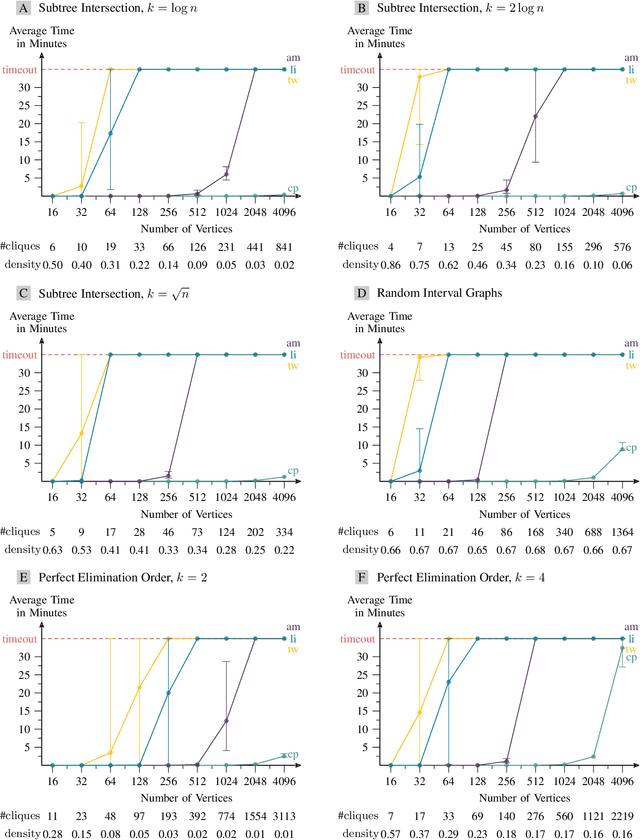
Abstract:Counting and uniform sampling of directed acyclic graphs (DAGs) from a Markov equivalence class are fundamental tasks in graphical causal analysis. In this paper, we show that these tasks can be performed in polynomial time, solving a long-standing open problem in this area. Our algorithms are effective and easily implementable. Experimental results show that the algorithms significantly outperform state-of-the-art methods.
 Add to Chrome
Add to Chrome Add to Firefox
Add to Firefox Add to Edge
Add to Edge